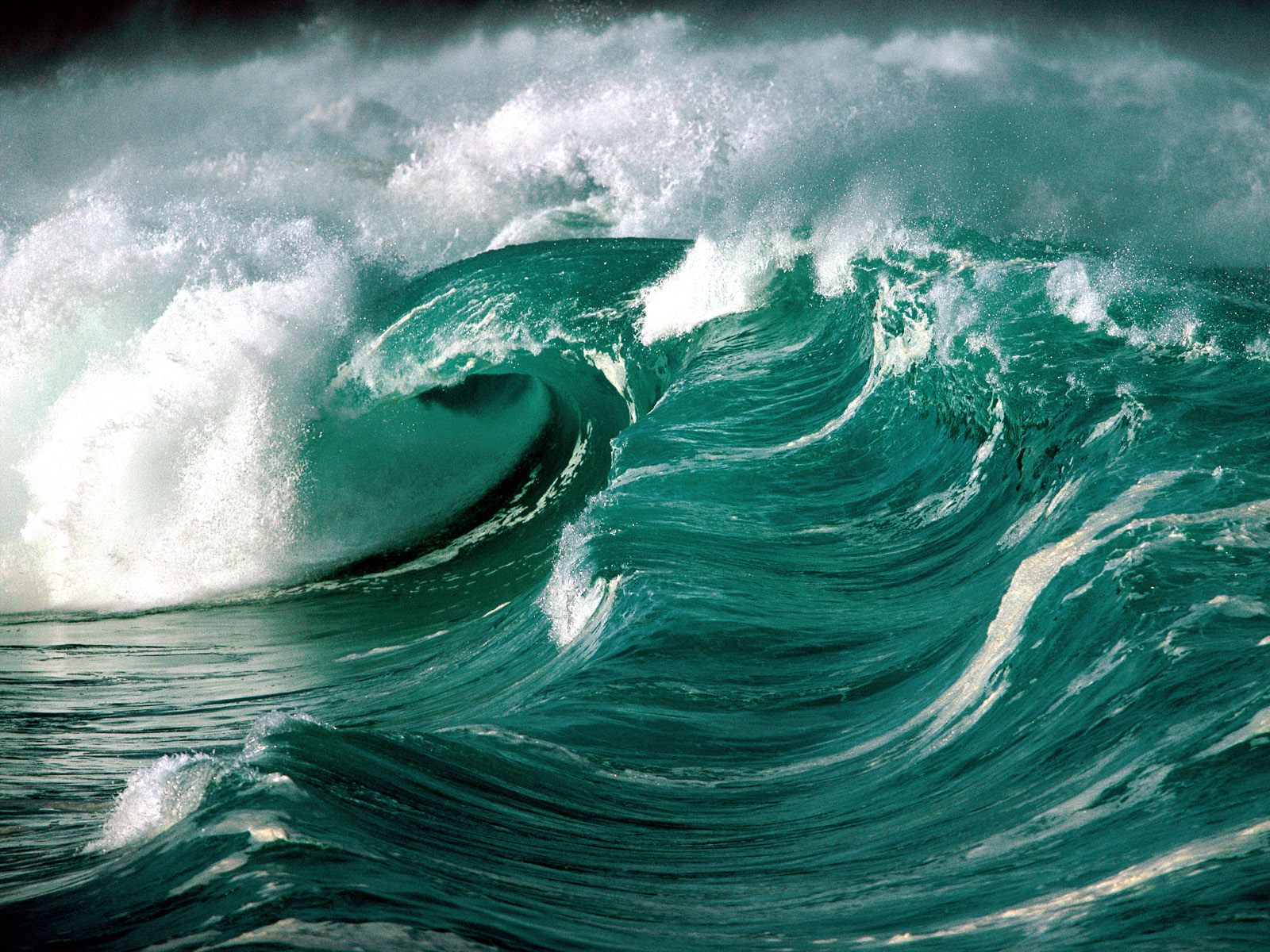Beautiful Sea Wallpapers Biography
source(google.com.pk)
The sea is the connected body of salt water that covers over 70 percent of the Earth's surface. The sea is important in moderating the Earth's climate, in providing food and oxygen, in its enormous diversity of life, and for transport. The study of the sea is called oceanography. The sea has been travelled and explored since ancient times, but its scientific study dates broadly from the voyages of Captain James Cook to explore the Pacific Ocean between 1768 and 1779.
Seawater is characteristically salty. The main solid in solution is sodium chloride, but the water also contains chlorides of potassium and magnesium, alongside many other chemical elements, in a composition that hardly varies across the world's oceans. However, the salinity varies widely, being lower near the surface and near the mouths of large rivers and higher in the cold depths of the ocean. The sea surface is subject to waves caused by winds. Waves decelerate and increase in height as they approach land and enter shallow water, becoming tall and unstable, and breaking into foam on the shore. Tsunamis are caused by submarine earthquakes or landslides and may be barely noticeable out at sea but can be violently destructive on shore. Winds create currents through friction, setting up slow but stable circulations of water throughout the sea. The directions of the circulation are governed by several factors including the shapes of the continents and the rotation of the earth. Complex deep-sea currents known as the global conveyor belt carry cold water from near the poles to every ocean. Large-scale movement of seawater is caused also by the tide, the twice-daily rhythm of the gravitational pull exerted by the Moon, and to a lesser extent by the Sun, on the Earth. Tides may have a very high range in bays or estuaries such as the Bay of Fundy, where tidal flows are funnelled into narrow channels.
All the major groups of living organisms are found in the sea including bacteria, protists, algae, plants, fungi and animals. It is widely regarded to be the place where life started, as well as where many of the major groups of organisms evolved. The sea contains a wide range of habitats and ecosystems, ranging vertically from the sunlit surface waters and the shoreline to the enormous depths and pressures of the cold, dark abyssal zone, and in latitude from the waters under the Arctic ice to the colourful diversity of coral reefs in tropical regions.
The sea provides substantial supplies of food, mainly fish, but also shellfish, marine mammals and seaweed, to people around the world. Some of these are caught by fishermen and others farmed in underwater operations. Other human uses of the sea include trade, travel, leisure activities such as swimming, sailing and scuba diving, mineral extraction, power generation and warfare. Many of these activities create marine pollution. The sea is important in human culture, with major appearances in literature at least since Homer's Odyssey, in marine art, in cinema, in theatre and in classical music. Symbolically, the sea appears as monsters such as Scylla in mythology and represents the collective unconscious in some forms of psychotherapy.The sea covers more than 70 percent of the Earth's surface with liquid water.Seen from space, our planet appears as a "blue marble" of various forms of water: salty oceans, sea ice, clouds.The science fiction author Arthur C. Clarke once suggested that "Earth" should have been named "Ocean" as the sea is its dominant feature.
The sea is from one point of view the World Ocean, the interconnected system of all the Earth's oceanic waters. About 97.2 percent of the Earth's water is found in the sea, some 326 million cubic miles (1360 million cubic kilometres) of salty water. Of the rest, 2.15 percent is accounted for by ice in glaciers, surface deposits and sea ice, and 0.65 percent is in the form of vapour or liquid fresh water in lakes, rivers, the ground and air.
The word "sea" can also be used for specific, much smaller bodies of water, such as the North Sea or the Red Sea. There is no sharp distinction between seas and oceans, though generally seas are smaller, and are often partly (as marginal seas) or wholly (as inland seas) bordered by land. However, the Sargasso Sea has no coastline and lies within a circular current, the North Atlantic Gyre. It is a distinctive body of water with brown Sargassum seaweed and calm blue water, very different from the rest of the Atlantic Ocean. Seas are generally larger than lakes and contain salt water rather than freshwater, but some geographic entities known as "seas" are enclosed inland bodies of water that are not salty: for instance, the Sea of Galilee is a freshwater lake The Law of the Sea states that all of the ocean is "sea".
"Freedom of the seas" is a principle in international law dating from the seventeenth century. It stresses freedom to navigate the oceans and disapproves of war fought in international waters. Today, this concept is enshrined in the United Nations Convention on the Law of the Sea, which came into force in 1994. Article 87(1) states: "The high seas are open to all states, whether coastal or land-locked." Article 87(1) (a) to (f) gives a non-exhaustive list of freedoms including navigation, overflight, the laying of submarine cables, building artificial islands, fishing and scientific research. Territorial waters extend to 12 nautical miles (22 kilometres; 14 miles) from the coastline and in these waters, the coastal state is free to set laws, regulate use and exploit any resource.
Beautiful Sea Wallpapers

Beautiful Sea Wallpapers

Beautiful Sea Wallpapers

Beautiful Sea Wallpapers

Beautiful Sea Wallpapers

Beautiful Sea Wallpapers

Beautiful Sea Wallpapers

Beautiful Sea Wallpapers

Beautiful Sea Wallpapers

Beautiful Sea Wallpapers

No comments:
Post a Comment